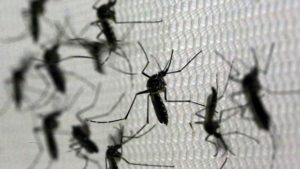Other than sperm cells and blood, doctors say Zika virus may spread through sweat and tears.
The doctors cautioned that in some cases, Zika virus may spread in sweat and tears.
This was the result of the study conducted by a team at the University of Utah School of Medicine.
The case was described by the team in the New England Journal of Medicine.

Dr. Sankar Swaminathan and colleagues conducted the study after a 73-year-old patient who died really was not very sick before he caught Zika, and this suggests that the virus can occasionally kill people who are not frail and ill.
In their report, the team said the patient who died in July was the first in the 50 U.S. states to be killed by Zika. He’d been treated for prostate cancer but wasn’t especially ill from that.
“Eight days before admission, he had returned from a 3-week trip to the southwest coast of Mexico, where Zika virus transmission had been reported. He was well during his trip but reported being bitten by mosquitoes,” the team said.
The patient died from respiratory and kidney failure four days after being infected. Tests conducted showed the older man had Zika, and had an extraordinary amount of the virus in his blood — thousands of times more than usual.
After his death, his 38-year-old son got sick, and developed the rash that’s characteristic of Zika infection.

“Patient 2 reported having assisted a nurse in repositioning Patient 1 in bed without using gloves. Patient 2 also reported having wiped Patient 1’s eyes during the hospitalization but reported having had no other overt contact with blood or other body fluids, including splashes or mucous membrane exposure,” the team wrote.
It was discovered that the younger man had not traveled, and the mosquitoes that spread Zika are not found in Utah. Because of this, investigators spent weeks trying to figure out how he got infected.
Following the study, Swaminathan’s team concluded, “Given the very high level of viremia in Patient 1, infectious levels of virus may have been present in sweat or tears, both of which Patient 2 contacted without gloves.”
That’s known to happen with Ebola, a different type of virus. When patients got extremely high levels of the virus in their blood, even their sweat became infectious to others.
Also like Ebola, Zika virus has been found in the eyes of patients.
“These two cases illustrate several important points. The spectrum of those at risk for fulminant (sudden and severe) Zika infection may be broader than previously recognized, and those who are not severely immunocompromised or chronically ill may nevertheless be at risk for fatal infection,” they said.
